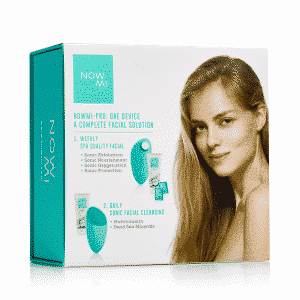Here is one more reason to quit smoking- it makes you look much older than you are. Dr. Flora Levin, an oculoplastic surgeon specializing in cosmetic eyelid surgery and non-surgical facial skin rejuvenation, provides this succinct description: “The facial skin of a 40-year-old heavy smoker resembles that on a non-smoking 70-year-old. The facial skin is dry and coarse with deep facial wrinkles and furrows, a slack jawline, discoloration and an uneven tone. The eyelids are often baggy with creped facial skin. The neck is saggy with loose skin and the blood vessels are dilated and prominent. The term ‘smoker’s face’ is used to describe these facial skin characteristics, which are all caused by smoking.[1]”
Why does this happen? It happens because the tobacco smoke contains thousands of chemicals and carcinogens that cause serious damage (we won’t talk about cancer and heart disease now, just about damage to the facial skin). Primarily, cigarette smoke is detrimental to blood circulation and just one cigarettes can limit blood flow for up to and hour and a half. Therefore, the facial skin is starved of oxygen for long periods of time which results in the breakdown of collagen and elastin- proteins that are essential for firm and healthy facial skin.
The list goes on. Since the blood flow is hindered, there is an increase in broken capillaries and veins which cause dark scarring on the face. Also, the nicotine slows down the healing process so the skin is less able to repair itself from intrinsic and extrinsic damage. Lastly, distinct furrows and wrinkles are formed from smoking- the act of sucking on the cigarette causes lines around your mouth and brows, and since the action is repeated, the lines become more pronounced.
Bottom line- smoking causes premature facial skin aging, slows down wound healing and increases the rate of infection. Smokers often suffer from discoloration of the teeth and tongue, wrinkles and fine lines, bags under the eyes, slack in the jawline and dry, coarse skin. And unfortunately, smokers experience higher rates of facial skin disorders such as: skin cancer, psoriasis, Hidradenitis suppurativa (chronic boils in the groin and armpits area), lupus and acne.
Okay. Enough with all the gloom and doom. This post is about your facial skin after you quit. So here is the good news. Our bodies are the most wondrous machines, and if you give your body a chance, it will do its best to reverse the damage. So once you quit smoking your blood circulation will improve and your facial skin will begin to heal itself. This means that it will start to produce more collagen and elastin which will restore your skin’s firmness and elasticity. Also, once you quit smoking, the coloration of your facial skin will dramatically improve since the skin won’t be infused with chemicals that suppress it.
Regarding the wrinkles, they may not go away at once, but they won’t get worse. There are however many things you can do to reduce wrinkles and fine lines. First, you can start by infusing your skin with vitamin C and E which help the skin to revitalize itself. The NowMi treatment is excellent in this respect since it oxygenate your facial skin restoring the needed oxygen to your face. It infuses the skin with 50% concentration of pure vitamin C, vitamin E and hyaluronic acid. The ingredients help the facial skin regain its firmness and elasticity and reduce the appearance of wrinkles as proved by clinical study. Best of all it is a personal skin oxygenation device and the NowMi vitamin C oxygen facial treatment can be done anywhere and anytime. It takes only 5 minutes to restore your glow and revitalized facial skin.
NowMi Pro is now on sale with Special Offer: Buy now a NowMi Pro Kit from the inventor of OxyGeneo and receive Free of Charge a NowMi refill kit (valued at $99) that will give you 3 extra months vitamin C oxygen facial treatments at home.
There are also a wide range of minimally and invasive aesthetic treatments out there. The technologies are constantly evolving, and the results are really impressive. No matter what path you choose, the first step is to say goodbye to smoking and hello to a healthier you.
Recommended reading NowMi vitamin C oxygen facial

 Youth, while taken for granted by the X and Y generations, is so sought after by those of us who’ve passed that stage of life. Many things cause our facial skin to age, especially UV radiation emitted by the sun. The UV creates free radicals that damage the facial skin cells and destroy the collagen and elastin in the dermis, causing wrinkles and sagging skin. UV rays also accelerate the production of facial skin pigment (melanin), resulting in the appearance of sun spots or age spots.
Youth, while taken for granted by the X and Y generations, is so sought after by those of us who’ve passed that stage of life. Many things cause our facial skin to age, especially UV radiation emitted by the sun. The UV creates free radicals that damage the facial skin cells and destroy the collagen and elastin in the dermis, causing wrinkles and sagging skin. UV rays also accelerate the production of facial skin pigment (melanin), resulting in the appearance of sun spots or age spots.